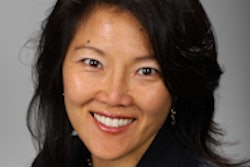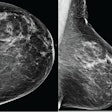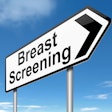Changing the frequency of breast screening from every two years to every year would detect three additional cancers in a sample population of 1,000 women ages 50 to 74, but it would generate nearly 2,000 more false positives, according to a research group that conducted a meta-analysis used by the U.S. Preventive Services Task Force (USPSTF) for its draft guidance on breast screening.
USPSTF this week announced a new draft guidance on breast screening that's largely unchanged from the controversial policy the group issued in 2009. The group recommended biennial screening for women ages 50 to 74 rather than annual exams, and it declined to recommend screening for average-risk women ages 40 to 49.
The task force based its draft guidance on a new analysis of the randomized controlled trials (RCTs) of breast screening that were conducted 30 to 40 years ago. The analysis was performed by researchers from the Cancer Intervention and Surveillance Modeling Network (CISNET) and the Breast Cancer Surveillance Consortium (BCSC).
In a publication this week, researchers from the CISNET/BCSC team provided additional insight into their findings on the benefits and harms of breast screening. The team said it used six statistical simulation models to analyze 10 different breast cancer screening strategies, such as starting ages that included 40, 45, and 50, and annual versus biennial screening intervals.
The principal finding of the analysis is that biennial screening of women ages 50 to 74 offers the best balance of benefits to harms, a finding that shaped USPSTF's decision. Other salient points of their analysis of the statistical models are as follows:
- In a population of women who do not receive screening, there is a 12.9% cumulative probability of dying of breast cancer from ages 40 to 100. Without screening, there is a 2.5% median probability of dying of breast cancer.
- Biennial screening from ages 50 to 74 produces a median 25.8% reduction in breast cancer mortality, which translates into seven breast cancer deaths averted and 953 false positives per 1,000 women screened.
- Starting biennial screening at the age of 40 averts one more breast cancer death and generates 576 more false-positive tests and one more case of overdiagnosis for every 1,000 women screened, compared with screening women at ages 50 to 74.
- Annual screening of average-risk women ages 50 to 74 would avert three more breast cancer deaths, but would yield 1,988 more false positives and seven more cases of overdiagnosis per 1,000 women screened, compared with biennial screening.
- For women with a 1.3-fold higher risk, such as that seen with high breast tissue density or obesity, biennial screening starting at 40 is comparable to biennial screening of average-risk women ages 50 to 74 in terms of benefits and harms.
- For women with a two- to fourfold increase in risk in their 40s, annual screening starting at 40 or 45 is comparable to biennial screening of average-risk women ages 50 to 74 in terms of benefits and harms.
- It is reasonable to continue to screen healthy women with an average 17 years of remaining life expectancy through age 78 or 80, compared with stopping at age 74. However, for women with moderate to severe illnesses, screening should stop at 68.



















